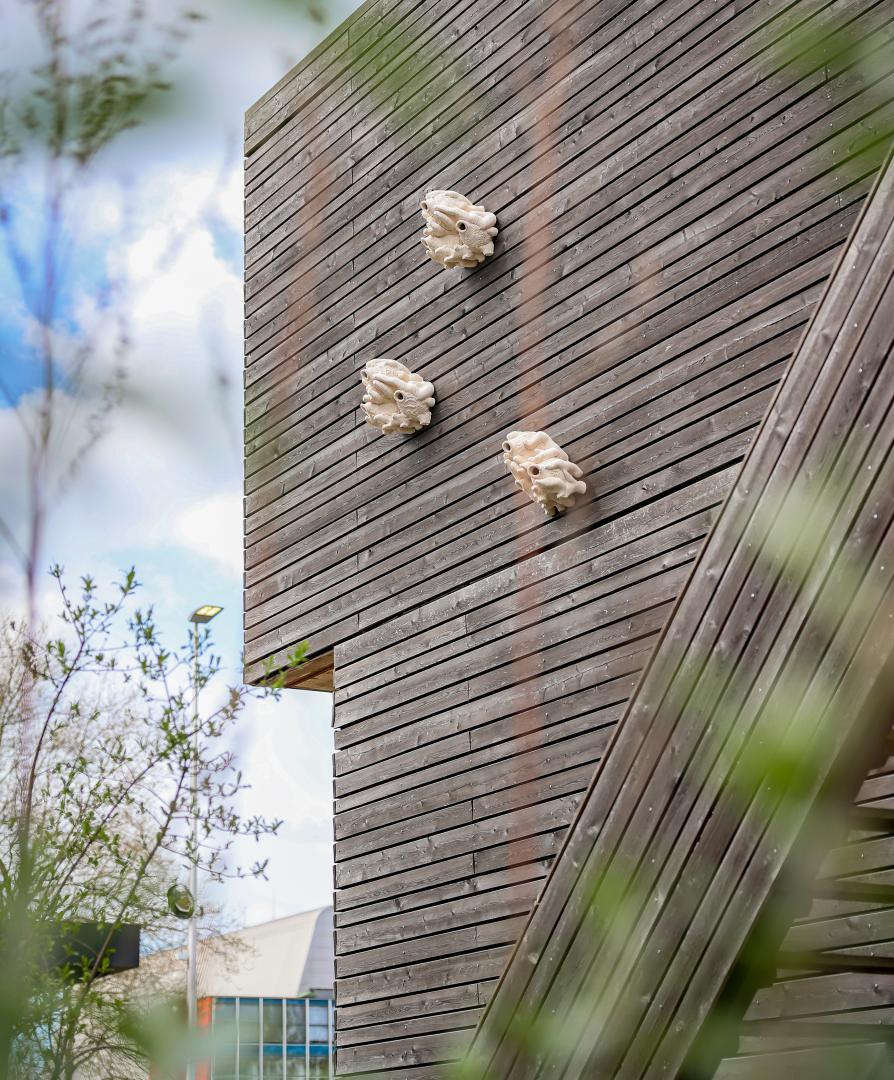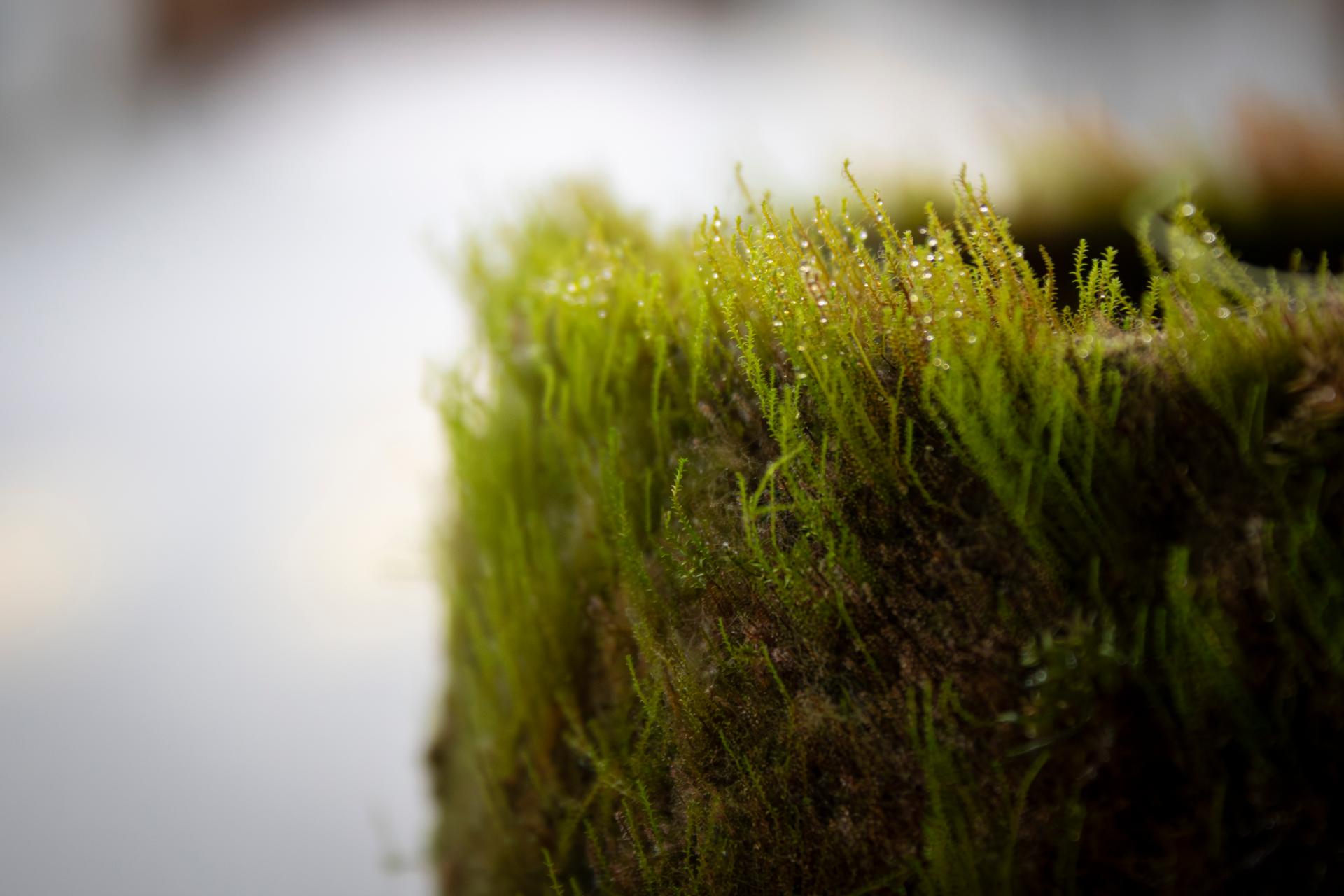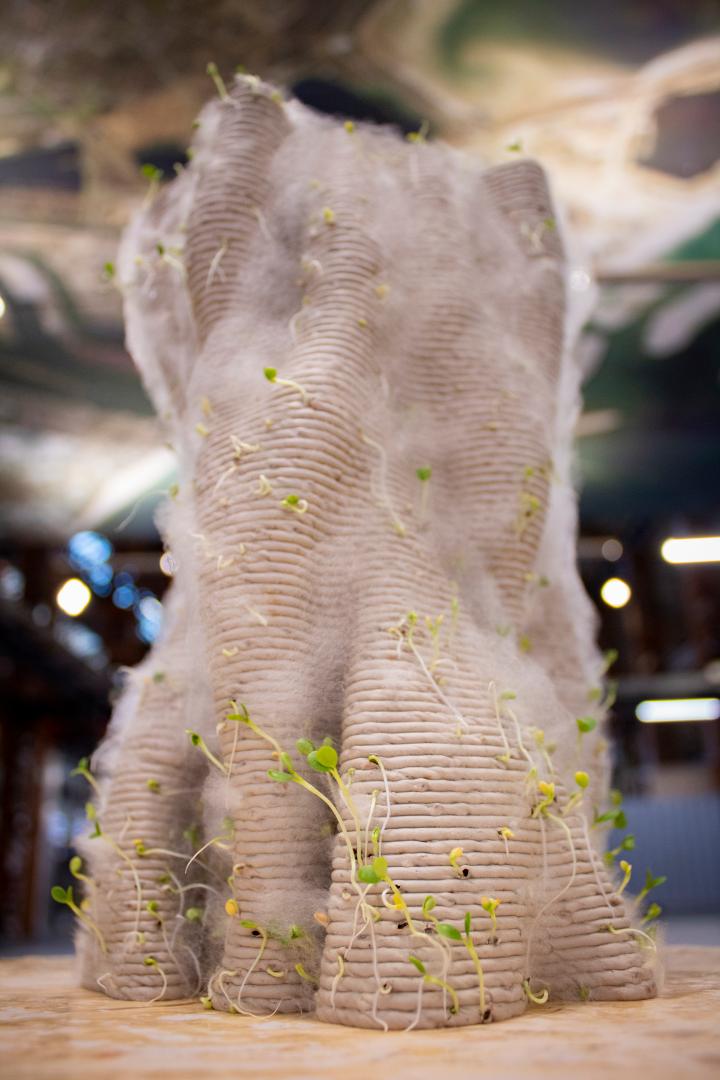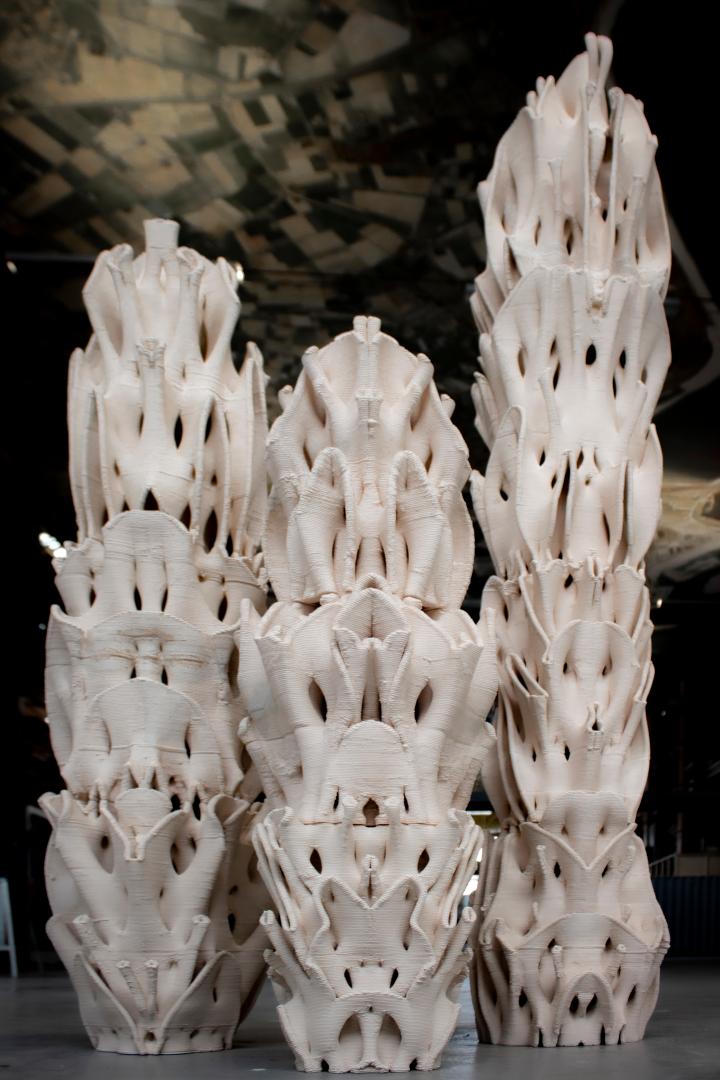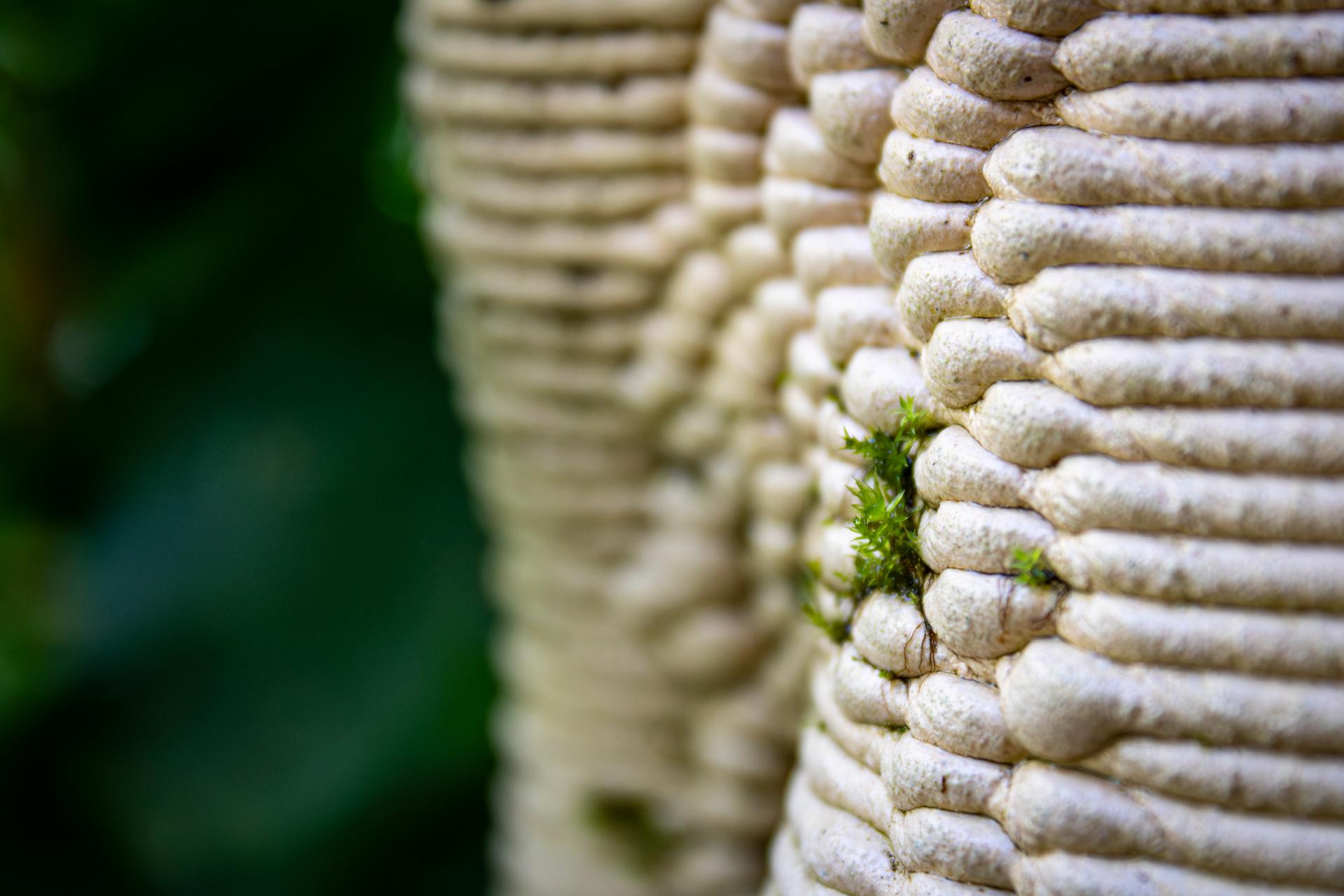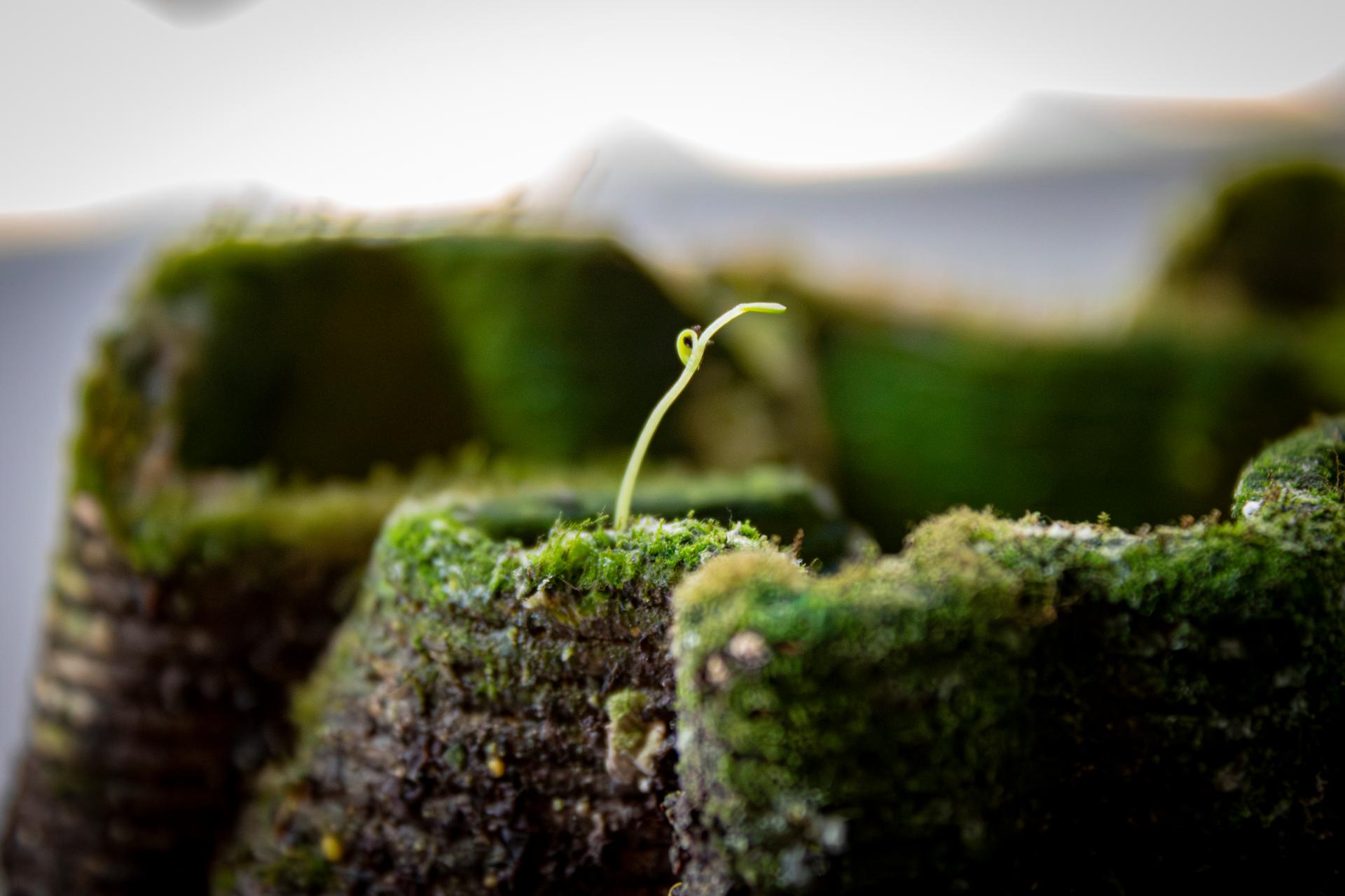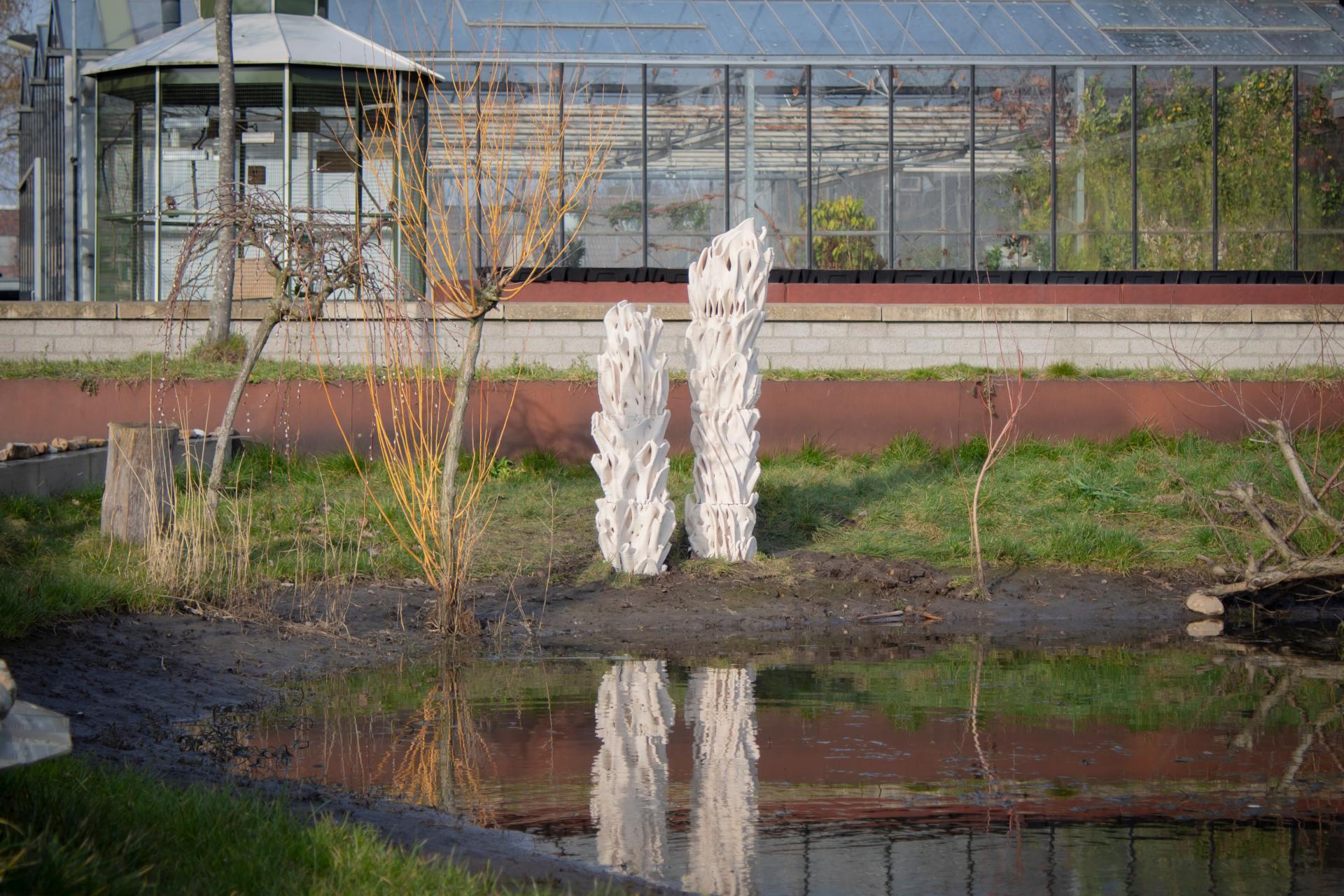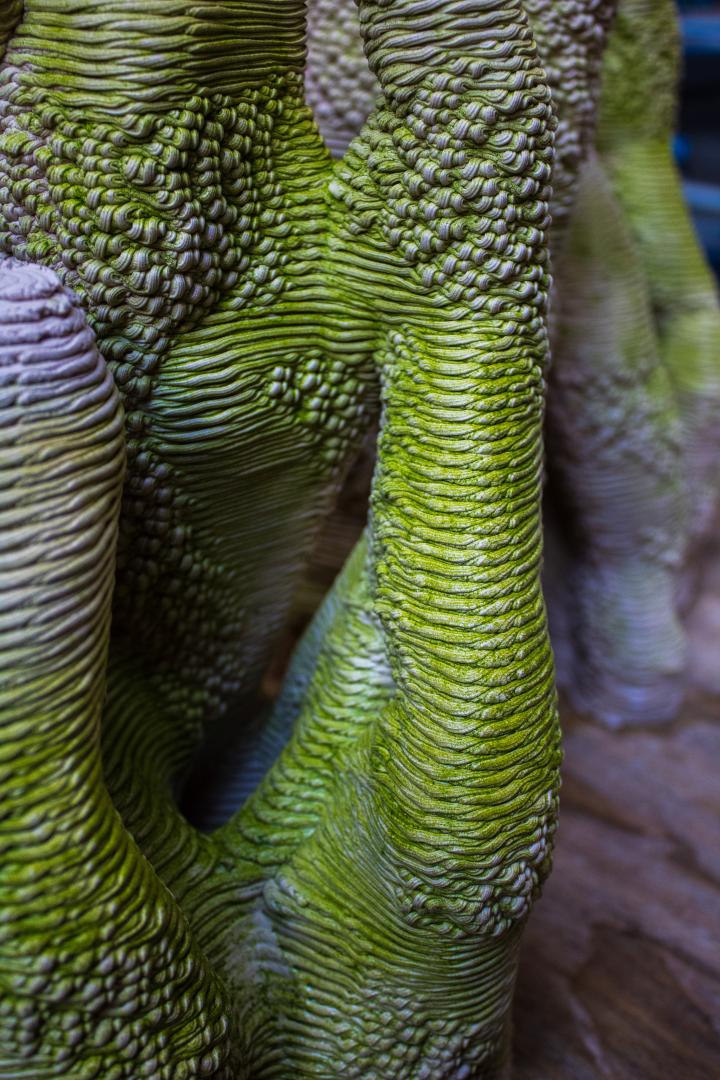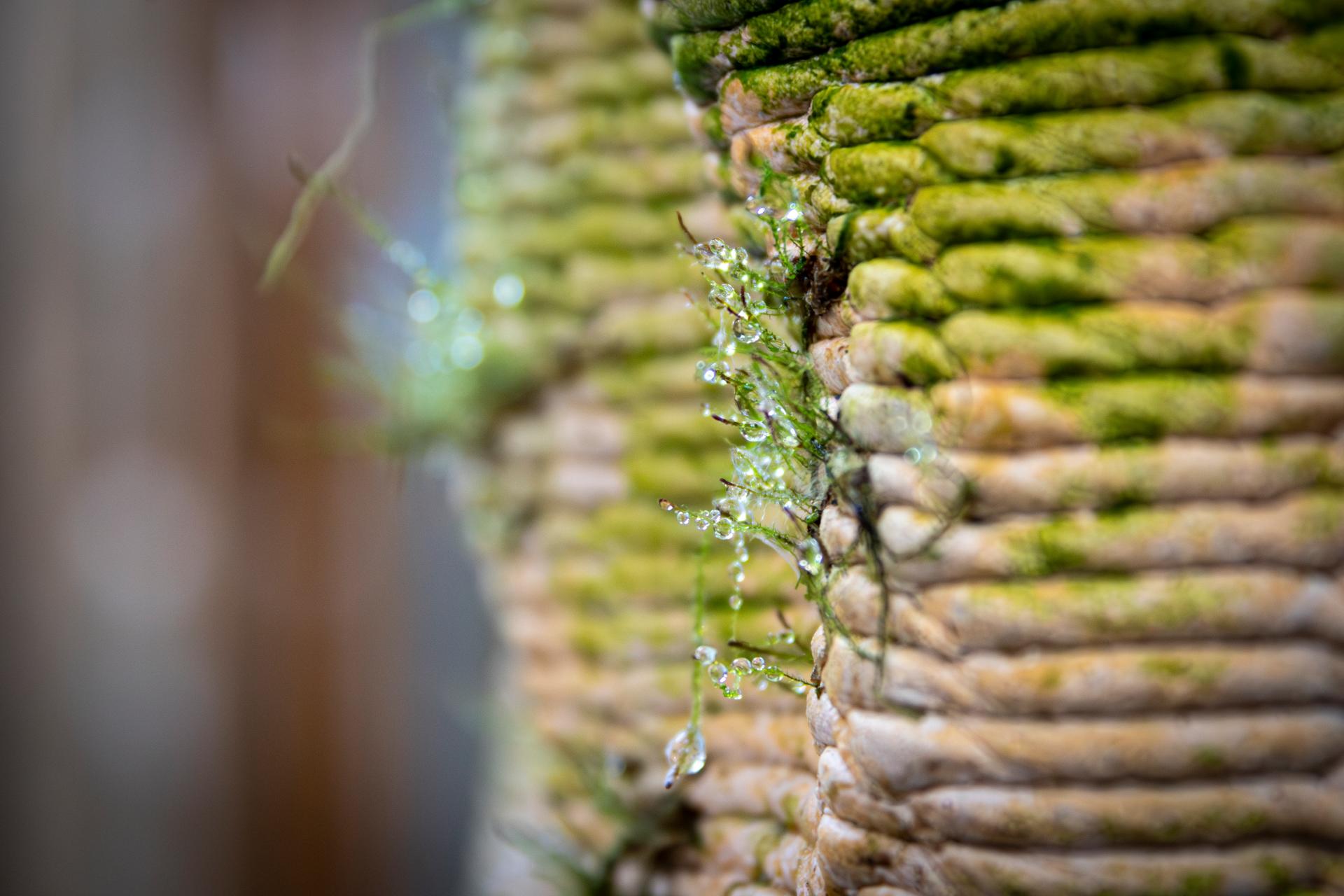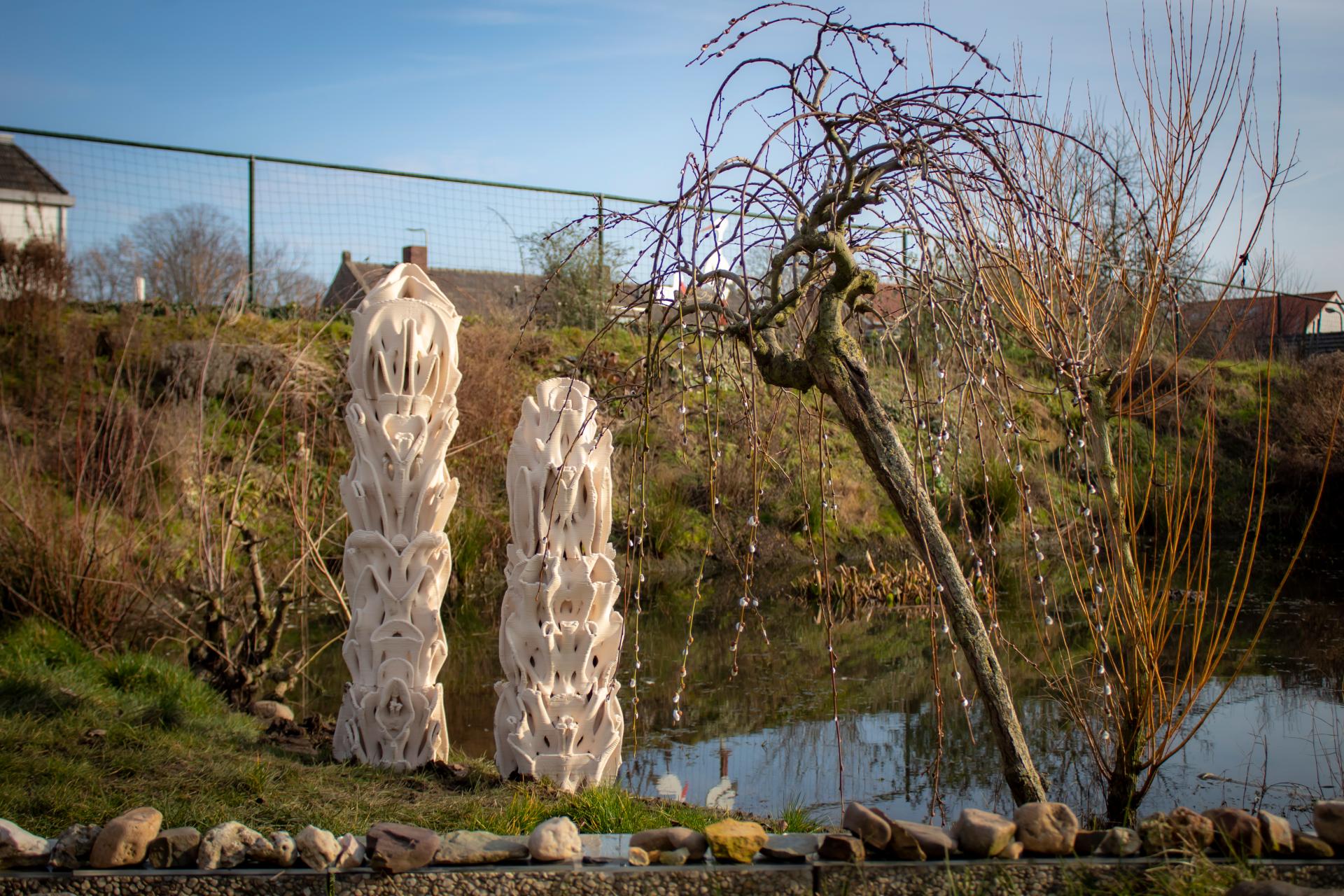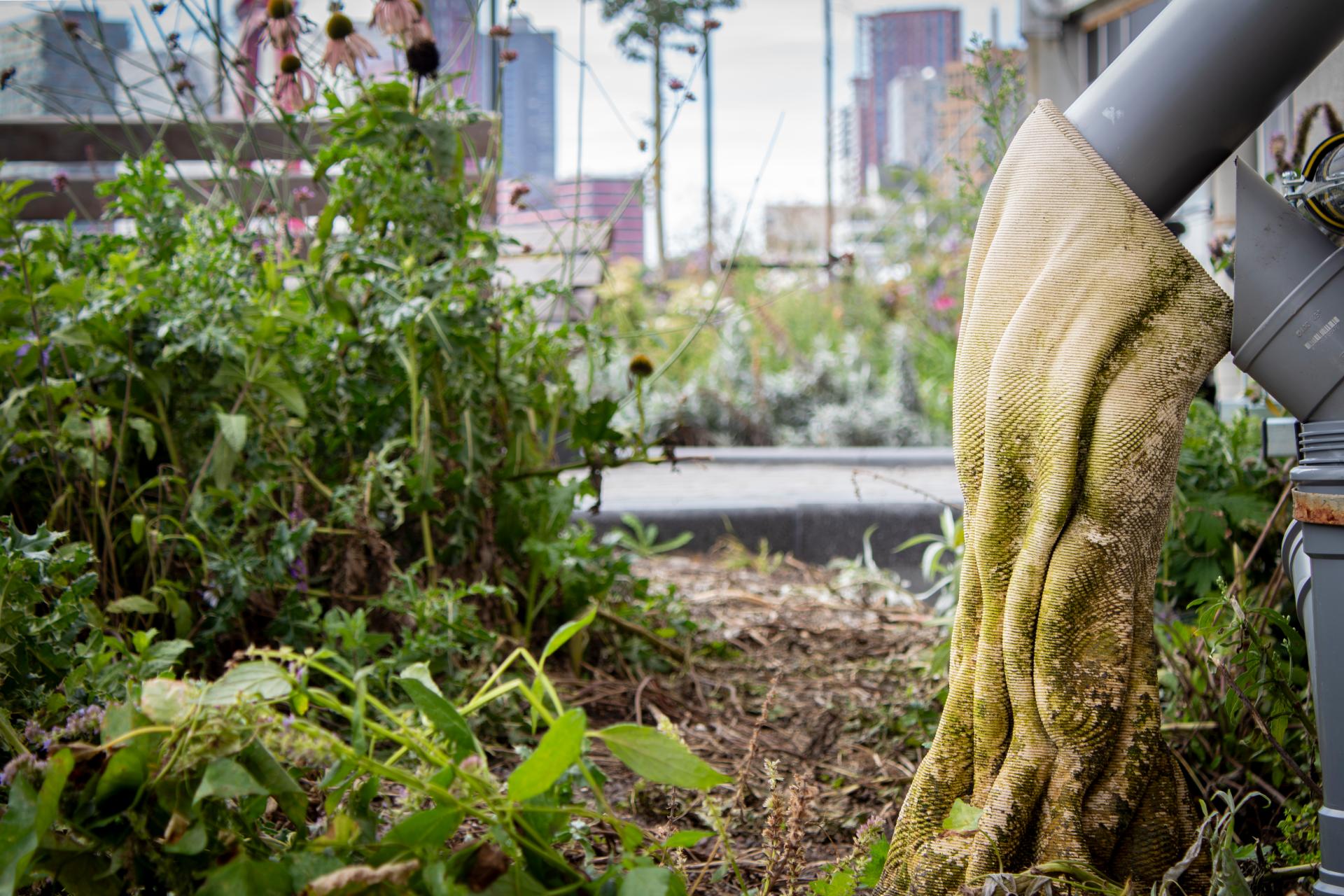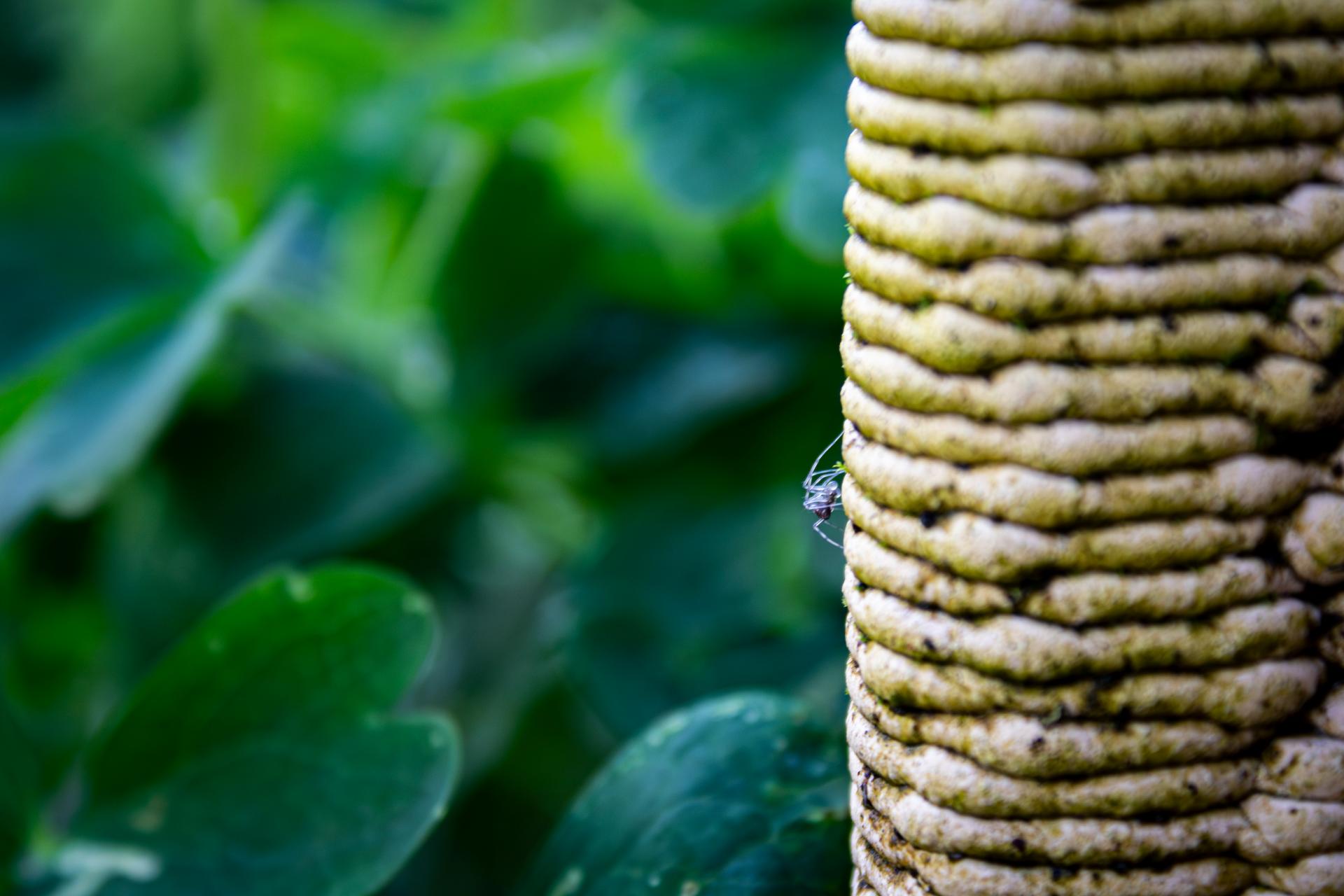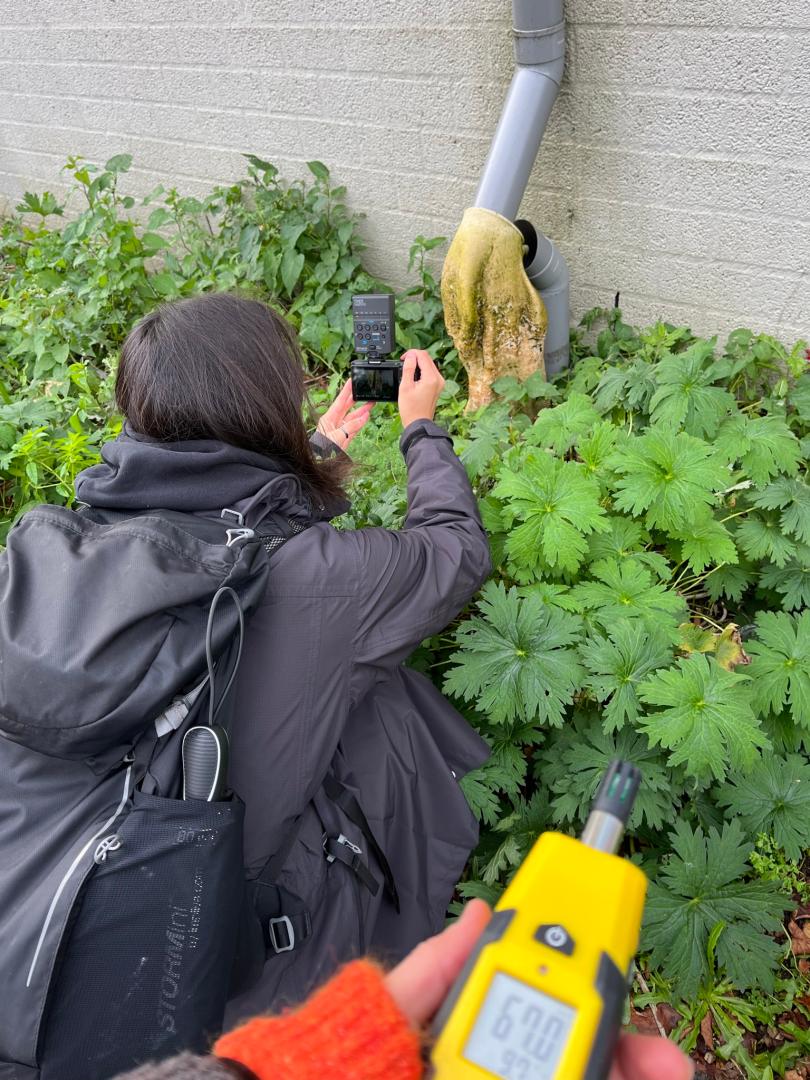Urban Reef
Basic information
Project Title
Urban Reef
Full project title
Urban Reef: Design for Bio-Inclusive Cities
Category
Reconnecting with nature
Project Description
UR is a startup that translates considerations from ecological philosophy into design. Their products, called Reefs, are designed as artefacts that provide environments for more-than-human cities. In order to coexist with more-than-human lives, urban settings need more room for uncontrolled and emerging ecologies, both physically and in collective imaginaries.
Geographical Scope
Regional
Project Region
South-Holland
North-Holland
Limburg, Netherlands
North-Holland
Limburg, Netherlands
Urban or rural issues
Mainly urban
Physical or other transformations
It refers to a physical transformation of the built environment (hard investment)
EU Programme or fund
No
Description of the project
Summary
Urban Reef transforms urban spaces into habitats for both humans and nature, promoting a life-centric urban model that prioritizes the well-being of all inhabitants - plants, animals, and people.
Aim:
Urban Reef aims to design and implement 30 bio-inclusive structures to bolster urban biodiversity, improve microclimates, and reconnect people with nature.
Target Groups:
Our initiatives engage urban planners, designers, environmentalists, community members, academia, and policymakers.
Specific Objectives:
- Develop bio-receptive designs from bio-based materials for inclusive urban landscapes.
- Monitor Reefs to advance a multispecies urban design paradigm.
- Collaborate with businesses and academic institutions in field-labs.
- Establish a business model for Reefs tailored to unique urban ecological needs.
- Encourage ecological awareness and sustainable practices through community engagement and education.
Achieved Outcomes:
- Developed bio-inclusive designs (400 experiments, 300 morphologies, 10 final prototypes) promoting spontaneous ecological growth and urban resilience.
- Advanced algorithms for bio-based aesthetics, utilising 3D printing and computational design.
- Progressed in circular material use, experimenting with sustainable materials like mycelium and cow manure (100 experiments, 7 materials).
- Launched seven pilot projects in diverse urban settings.
Validated Reefs' ecological benefits: biodiversity enhancement, microclimate cooling (2 degrees), and air quality improvement.
- Secured +€200k Funding
- +35k followers on social media and given 9 expositions
- Facilitated over 15 workshops and 30 talks and seminars with universities, municipalities, and governments for collaboration and collective brainstorming.
- Developed strategies and 5 business models to demonstrate market and technical viability
Aim:
Urban Reef aims to design and implement 30 bio-inclusive structures to bolster urban biodiversity, improve microclimates, and reconnect people with nature.
Target Groups:
Our initiatives engage urban planners, designers, environmentalists, community members, academia, and policymakers.
Specific Objectives:
- Develop bio-receptive designs from bio-based materials for inclusive urban landscapes.
- Monitor Reefs to advance a multispecies urban design paradigm.
- Collaborate with businesses and academic institutions in field-labs.
- Establish a business model for Reefs tailored to unique urban ecological needs.
- Encourage ecological awareness and sustainable practices through community engagement and education.
Achieved Outcomes:
- Developed bio-inclusive designs (400 experiments, 300 morphologies, 10 final prototypes) promoting spontaneous ecological growth and urban resilience.
- Advanced algorithms for bio-based aesthetics, utilising 3D printing and computational design.
- Progressed in circular material use, experimenting with sustainable materials like mycelium and cow manure (100 experiments, 7 materials).
- Launched seven pilot projects in diverse urban settings.
Validated Reefs' ecological benefits: biodiversity enhancement, microclimate cooling (2 degrees), and air quality improvement.
- Secured +€200k Funding
- +35k followers on social media and given 9 expositions
- Facilitated over 15 workshops and 30 talks and seminars with universities, municipalities, and governments for collaboration and collective brainstorming.
- Developed strategies and 5 business models to demonstrate market and technical viability
Key objectives for sustainability
Our project aligns with the New European Bauhaus vision, embracing beauty, sustainability, and inclusivity in urban design. Our Reefs are not only aesthetic enhancements but also functional assets that boost biodiversity and climate resilience. We're committed to sustainable and inclusive urban development, reflecting the interconnectedness of humans and nature, and adhering to specific Sustainable Development Goals (SDGs).
The Reefs primarily contribute to SDG 11 (Sustainable Cities and Communities), targeting inclusive urbanization (11.3), reducing environmental impact (11.6), and protecting natural and cultural heritage (11.4). They also advance SDG 13 (Climate Action) by fostering resilience to climate disruptions (13.1) and aiding in carbon capture.
Our methodology supports SDG 9 (Industry, Innovation, and Infrastructure), creating multifunctional spaces that serve as habitats and cultural sites (9.4 and 9.1). This inclusive approach extends to multiple species, resonating with the diverse community vision of the Bauhaus.
In line with SDG 12 (Responsible Consumption and Production), we focus on sustainable resource management (12.2) and environmentally responsible behaviors (12.8) through novel material use and 3D printing, minimizing waste and aligning urban development with natural systems.
Furthermore, our efforts align with SDG 15 (Life on Land) by enhancing urban biodiversity (15.5) and incorporating biophilic design (15.9). Indirectly, our project contributes to SDG 3 (Good Health and Well-being), as biophilic urban elements are linked to improved mental and physical health, embodying holistic well-being principles.
The Reefs primarily contribute to SDG 11 (Sustainable Cities and Communities), targeting inclusive urbanization (11.3), reducing environmental impact (11.6), and protecting natural and cultural heritage (11.4). They also advance SDG 13 (Climate Action) by fostering resilience to climate disruptions (13.1) and aiding in carbon capture.
Our methodology supports SDG 9 (Industry, Innovation, and Infrastructure), creating multifunctional spaces that serve as habitats and cultural sites (9.4 and 9.1). This inclusive approach extends to multiple species, resonating with the diverse community vision of the Bauhaus.
In line with SDG 12 (Responsible Consumption and Production), we focus on sustainable resource management (12.2) and environmentally responsible behaviors (12.8) through novel material use and 3D printing, minimizing waste and aligning urban development with natural systems.
Furthermore, our efforts align with SDG 15 (Life on Land) by enhancing urban biodiversity (15.5) and incorporating biophilic design (15.9). Indirectly, our project contributes to SDG 3 (Good Health and Well-being), as biophilic urban elements are linked to improved mental and physical health, embodying holistic well-being principles.
Key objectives for aesthetics and quality
Bio-based aesthetics
Urban Reefs are constructed with an emphasis on design that aligns with the surrounding urban landscape, aiming for visual cohesion. The aesthetics are intentional, with forms and materials selected to create pleasing environments that also serve ecological functions. The outcome is an aesthetic that supports biodiversity while enhancing the urban experience.
Examples in fieldlabs
Collectively, our project is an example of how urban spaces can be designed to be ecologically beneficial, aesthetically pleasing, and culturally enriching.
Quality of Experience
The design of the Urban Reefs is focused on improving the day-to-day experiences of city dwellers. These installations are interactive habitats, inviting engagement and offering direct contact with natural processes. By incorporating local materials and natural elements, the Reefs resonate with the locale’s ecological and geological identity, enhancing the sense of place.
Cultural Connectivity
These structures also serve as cultural connectors, strengthening the community's commitment to sustainability. They provide spaces for cultural engagement and social interaction, contributing to the cultural vibrancy of the community. The Reefs act as living installations where people can gather, learn, and participate in the stewardship of their environment.The diversity of life attracted by the Reefs mirrors the diverse nature of urban society. They provide habitats for various species, contributing to an ecological diversity that is celebrated as part of the urban fabric. This biodiversity becomes an integral aspect of the city’s character and cultural identity.
Urban Reefs are constructed with an emphasis on design that aligns with the surrounding urban landscape, aiming for visual cohesion. The aesthetics are intentional, with forms and materials selected to create pleasing environments that also serve ecological functions. The outcome is an aesthetic that supports biodiversity while enhancing the urban experience.
Examples in fieldlabs
Collectively, our project is an example of how urban spaces can be designed to be ecologically beneficial, aesthetically pleasing, and culturally enriching.
Quality of Experience
The design of the Urban Reefs is focused on improving the day-to-day experiences of city dwellers. These installations are interactive habitats, inviting engagement and offering direct contact with natural processes. By incorporating local materials and natural elements, the Reefs resonate with the locale’s ecological and geological identity, enhancing the sense of place.
Cultural Connectivity
These structures also serve as cultural connectors, strengthening the community's commitment to sustainability. They provide spaces for cultural engagement and social interaction, contributing to the cultural vibrancy of the community. The Reefs act as living installations where people can gather, learn, and participate in the stewardship of their environment.The diversity of life attracted by the Reefs mirrors the diverse nature of urban society. They provide habitats for various species, contributing to an ecological diversity that is celebrated as part of the urban fabric. This biodiversity becomes an integral aspect of the city’s character and cultural identity.
Key objectives for inclusion
The Urban Reef initiative is based on inclusive practices and innovative strategies, emphasising accessibility, affordability, and collaboration:
Accessibility and open-source materials: We have ensured physical accessibility through universal design features, and we have also used open-source materials. As a result, our Reefs can be replicated and adapted to diverse urban settings.
Affordability and local materials: Economic and environmental sustainability are guaranteed through the use of local materials, thus reducing transportation emissions and costs, while also supporting the local economy.
Inclusive governance and student collaboration: The governance model for the project is inclusive, benefiting from the fresh perspectives and innovative ideas of students from across Europe. Cross-cultural educational collaboration has helped ensure that the Urban Reefs are the product of a reflection from a diverse society.
Educational and cultural integration: By working with local ecosystems, we are not only creating urban infrastructure, but also educational landscapes. Students and residents engage in workshops which teach ecological principles and construction techniques, fostering a hands-on understanding of sustainability.
Public engagement and exhibitions: The narrative of Urban Reefs is shared through exhibitions which serve as an interactive platform for spreading awareness and garnering support and feedback for the project's continual improvement.
Collaboration with field-labs: We have partnered with field-labs and local governments to ensure that the project is grounded in scientific research and aligned with urban development policies. This collaboration also helps guarantee that Urban Reefs are integrated into the city's ecosystem in a policy-compliant manner.
Accessibility and open-source materials: We have ensured physical accessibility through universal design features, and we have also used open-source materials. As a result, our Reefs can be replicated and adapted to diverse urban settings.
Affordability and local materials: Economic and environmental sustainability are guaranteed through the use of local materials, thus reducing transportation emissions and costs, while also supporting the local economy.
Inclusive governance and student collaboration: The governance model for the project is inclusive, benefiting from the fresh perspectives and innovative ideas of students from across Europe. Cross-cultural educational collaboration has helped ensure that the Urban Reefs are the product of a reflection from a diverse society.
Educational and cultural integration: By working with local ecosystems, we are not only creating urban infrastructure, but also educational landscapes. Students and residents engage in workshops which teach ecological principles and construction techniques, fostering a hands-on understanding of sustainability.
Public engagement and exhibitions: The narrative of Urban Reefs is shared through exhibitions which serve as an interactive platform for spreading awareness and garnering support and feedback for the project's continual improvement.
Collaboration with field-labs: We have partnered with field-labs and local governments to ensure that the project is grounded in scientific research and aligned with urban development policies. This collaboration also helps guarantee that Urban Reefs are integrated into the city's ecosystem in a policy-compliant manner.
Results in relation to category
Urban Reef's approach to fostering connection to nature through more-than-human design has produced tangible results and garnered measurable impact:
- 100 Reefs Built, 41 On Site: 41 Reefs have successfully been implemented across various urban settings, directly integrating ecological considerations into the built environment and validating the project's concepts.
- +€200k Funding: secured through a mix of grants and self-investment to facilitate the construction and research associated with the Reefs.
- 16 Organisations collaborated, ranging from municipalities to construction companies, to deploy the Reefs
- 7 Pilot Projects done, 10 in the planning, allowing for an assessment of Reefs in different urban contexts, from tidal parks to residential areas.
- 35k+ Social Media Engagement: We have a growing online community with thousands of followers across social media platforms.
- 11 Educational Institutes: We have conducted numerous talks and workshops about the project, reaching a wide audience and fostering a public reflection on the potentials of urban design for reconnecting with nature.
Direct Benefits:
- Local stakeholders gain innovative, bio-inclusive design models which can be replicated and scaled.
- Pilot areas experience increased environmental awareness and engagement.
Indirect Benefits:
- Educational institutions receive hands-on opportunities for student engagement in cutting-edge design practices.
- Collaborating organisations gain recognition for their commitment to sustainable and inclusive urban development.
Quantified Impact:
- Reefs cool down 2-2,4 degrees and attract pioneering species
- 100 Reefs Built, 41 On Site: 41 Reefs have successfully been implemented across various urban settings, directly integrating ecological considerations into the built environment and validating the project's concepts.
- +€200k Funding: secured through a mix of grants and self-investment to facilitate the construction and research associated with the Reefs.
- 16 Organisations collaborated, ranging from municipalities to construction companies, to deploy the Reefs
- 7 Pilot Projects done, 10 in the planning, allowing for an assessment of Reefs in different urban contexts, from tidal parks to residential areas.
- 35k+ Social Media Engagement: We have a growing online community with thousands of followers across social media platforms.
- 11 Educational Institutes: We have conducted numerous talks and workshops about the project, reaching a wide audience and fostering a public reflection on the potentials of urban design for reconnecting with nature.
Direct Benefits:
- Local stakeholders gain innovative, bio-inclusive design models which can be replicated and scaled.
- Pilot areas experience increased environmental awareness and engagement.
Indirect Benefits:
- Educational institutions receive hands-on opportunities for student engagement in cutting-edge design practices.
- Collaborating organisations gain recognition for their commitment to sustainable and inclusive urban development.
Quantified Impact:
- Reefs cool down 2-2,4 degrees and attract pioneering species
How Citizens benefit
Our project aligns with the New European Bauhaus vision, embracing beauty, sustainability, and inclusivity in urban design. Our Reefs are not only aesthetic enhancements but also functional assets that boost biodiversity and climate resilience. We're committed to sustainable and inclusive urban development, reflecting the interconnectedness of humans and nature, and adhering to specific Sustainable Development Goals (SDGs).
The Reefs primarily contribute to SDG 11 (Sustainable Cities and Communities), targeting inclusive urbanization (11.3), reducing environmental impact (11.6), and protecting natural and cultural heritage (11.4). They also advance SDG 13 (Climate Action) by fostering resilience to climate disruptions (13.1) and aiding in carbon capture.
Our methodology supports SDG 9 (Industry, Innovation, and Infrastructure), creating multifunctional spaces that serve as habitats and cultural sites (9.4 and 9.1). This inclusive approach extends to multiple species, resonating with the diverse community vision of the Bauhaus.
In line with SDG 12 (Responsible Consumption and Production), we focus on sustainable resource management (12.2) and environmentally responsible behaviors (12.8) through novel material use and 3D printing, minimizing waste and aligning urban development with natural systems.
Furthermore, our efforts align with SDG 15 (Life on Land) by enhancing urban biodiversity (15.5) and incorporating biophilic design (15.9). Indirectly, our project contributes to SDG 3 (Good Health and Well-being), as biophilic urban elements are linked to improved mental and physical health, embodying holistic well-being principles.
The Reefs primarily contribute to SDG 11 (Sustainable Cities and Communities), targeting inclusive urbanization (11.3), reducing environmental impact (11.6), and protecting natural and cultural heritage (11.4). They also advance SDG 13 (Climate Action) by fostering resilience to climate disruptions (13.1) and aiding in carbon capture.
Our methodology supports SDG 9 (Industry, Innovation, and Infrastructure), creating multifunctional spaces that serve as habitats and cultural sites (9.4 and 9.1). This inclusive approach extends to multiple species, resonating with the diverse community vision of the Bauhaus.
In line with SDG 12 (Responsible Consumption and Production), we focus on sustainable resource management (12.2) and environmentally responsible behaviors (12.8) through novel material use and 3D printing, minimizing waste and aligning urban development with natural systems.
Furthermore, our efforts align with SDG 15 (Life on Land) by enhancing urban biodiversity (15.5) and incorporating biophilic design (15.9). Indirectly, our project contributes to SDG 3 (Good Health and Well-being), as biophilic urban elements are linked to improved mental and physical health, embodying holistic well-being principles.
Physical or other transformations
It refers to a physical transformation of the built environment (hard investment)
Innovative character
Ecological Philosophy as a Starting Point:
Innovation: Our approach to design prioritises the integration of natural processes into urban spaces from the inception.
Contrast: Most urban projects are predominantly human-centric, with ecological considerations as a secondary or superficial concern.
Bio-Inclusive Urbanism:
Innovation: The project champions bio-inclusion with urban structures designed to be living entities supporting biodiversity.
Contrast: Traditional urban development usually creates spaces for people first, with limited habitats for other species.
Bio-Based Aesthetic Informed by Algorithms:
Innovation: Using algorithmic design, our bio-structures merge functionality with the organic beauty of natural forms like fractals.
Contrast: Mainstream urban design is more rigid, imposing aesthetic and overlooking organic processes.
3D Printing with Living Materials:
Innovation: 3D printing with living or biodegradable materials represents a leap forward in sustainable construction practices.
Contrast: Building practices often rely on energy-intensive non-biodegradable materials.
Advanced Bio-receptivity for urban settings:
Innovation: The project's structures are optimised for bio-receptivity, encouraging the natural growth and colonisation of organisms.
Contrast: In standard practices, buildings are designed to resist biological growth instead of facilitating it.
Learning from Emergent Ecologies:
Innovation: Our design evolves alongside emergent ecologies, creating a feedback loop that informs and improves upon the design.
Contrast: Typical urban design is static and rarely adapts post-construction based on ecological feedback.
Storytelling through design:
Innovation: Beyond their ecological and functional roles, the Reefs serve a narrative purpose, telling the story of coexistence between humans and nature.
Contrast: Urban infrastructures do not usually convey a narrative, especially one that promotes ecological awareness and education.
Innovation: Our approach to design prioritises the integration of natural processes into urban spaces from the inception.
Contrast: Most urban projects are predominantly human-centric, with ecological considerations as a secondary or superficial concern.
Bio-Inclusive Urbanism:
Innovation: The project champions bio-inclusion with urban structures designed to be living entities supporting biodiversity.
Contrast: Traditional urban development usually creates spaces for people first, with limited habitats for other species.
Bio-Based Aesthetic Informed by Algorithms:
Innovation: Using algorithmic design, our bio-structures merge functionality with the organic beauty of natural forms like fractals.
Contrast: Mainstream urban design is more rigid, imposing aesthetic and overlooking organic processes.
3D Printing with Living Materials:
Innovation: 3D printing with living or biodegradable materials represents a leap forward in sustainable construction practices.
Contrast: Building practices often rely on energy-intensive non-biodegradable materials.
Advanced Bio-receptivity for urban settings:
Innovation: The project's structures are optimised for bio-receptivity, encouraging the natural growth and colonisation of organisms.
Contrast: In standard practices, buildings are designed to resist biological growth instead of facilitating it.
Learning from Emergent Ecologies:
Innovation: Our design evolves alongside emergent ecologies, creating a feedback loop that informs and improves upon the design.
Contrast: Typical urban design is static and rarely adapts post-construction based on ecological feedback.
Storytelling through design:
Innovation: Beyond their ecological and functional roles, the Reefs serve a narrative purpose, telling the story of coexistence between humans and nature.
Contrast: Urban infrastructures do not usually convey a narrative, especially one that promotes ecological awareness and education.
Disciplines/knowledge reflected
The Urban Reef project is deeply interdisciplinary, merging insights from urban development, sustainability, and ecology. Collaboration across various fields shaped its success:
Biologists and ecologists guided Reef design, ensuring 3D printed structures support urban flora and fauna, meeting specific ecological needs.
Design & Additive Manufacturing:
Designers collaborated with additive manufacturing specialists, balancing aesthetics with functionality in complex structures. Scalable production potential was assessed.
Material scientists explored eco-friendly Reef materials resistant to urban conditions, facilitating biological growth with suitable substrates.
Social Impact Research & Ecological Philosophy:
Researchers assessed social implications, providing frameworks for integrating Reefs into public spaces, fostering a connection between urban dwellers and their environment.
Multimedia Design:
Crucial for project communication, multimedia designers developed interfaces to measure and demonstrate Reef impact, promoting success to stakeholders and the public.
Climate & Market Research:
Researchers provided climate benefits data and conducted market analysis, aligning the project with economic and environmental goals.
Interdisciplinary Interaction:
Added value: Cross-disciplinary collaboration ensured coherence; material choices aligned with additive manufacturing and design specifications, influenced by market research for commercial viability.
This integrated approach ensures the project contributes to urban biodiversity, considers social contexts and market dynamics, providing a replicable model for other urban environments.
Biologists and ecologists guided Reef design, ensuring 3D printed structures support urban flora and fauna, meeting specific ecological needs.
Design & Additive Manufacturing:
Designers collaborated with additive manufacturing specialists, balancing aesthetics with functionality in complex structures. Scalable production potential was assessed.
Material scientists explored eco-friendly Reef materials resistant to urban conditions, facilitating biological growth with suitable substrates.
Social Impact Research & Ecological Philosophy:
Researchers assessed social implications, providing frameworks for integrating Reefs into public spaces, fostering a connection between urban dwellers and their environment.
Multimedia Design:
Crucial for project communication, multimedia designers developed interfaces to measure and demonstrate Reef impact, promoting success to stakeholders and the public.
Climate & Market Research:
Researchers provided climate benefits data and conducted market analysis, aligning the project with economic and environmental goals.
Interdisciplinary Interaction:
Added value: Cross-disciplinary collaboration ensured coherence; material choices aligned with additive manufacturing and design specifications, influenced by market research for commercial viability.
This integrated approach ensures the project contributes to urban biodiversity, considers social contexts and market dynamics, providing a replicable model for other urban environments.
Methodology used
Research through design (RtD) is a methodology that integrates practical design into research processes. We use RtD to test and evaluate ecological and architectural innovations within urban spaces. Urban Reef project showcases this approach through three key components:
Future Thinking:
Explorative: Envisions diverse ecological futures for urban spaces, challenging assumptions and expanding possibilities for sustainable urban living.
Speculative: Speculating on future possibilities, our design principles are continuously shaped by a long-term vision anticipating changes in urban ecosystems and societal needs.
Adaptive: Future Thinking in RtD allows the project to remain adaptive, ensuring that our designs respond to emerging ecological and urban developments.
Prototyping:
Experimental: In our prototyping stage, design serves as an investigative tool to yield insights into material properties, structural integrity, and ecological interactions.
Reflective: Each prototype iteration leads to reflection and knowledge generation, contributing to the iterative evolution of the design. This reflective practice is key in RtD, turning design into a method for learning.
Evolutionary: Prototypes evolve based on findings and feedback, embodying an RtD approach where design iterations are informed by practical experiences and empirical evidence.
Field-labs:
Empirical: Field-labs are empirical research environments where our Reefs are observed and studied in situ to inform an ongoing cycle of action and reflection.
Interactive: Field-labs facilitate interaction between design elements, local communities, and the environment, generating qualitative and quantitative data for a deeper understanding of ecological dynamics and user experiences.
Transdisciplinary: RtD often involves collaboration across disciplines, and Field-labs exemplify this by integrating knowledge from ecology, urban planning, material science, and community engagement into the research process.
Future Thinking:
Explorative: Envisions diverse ecological futures for urban spaces, challenging assumptions and expanding possibilities for sustainable urban living.
Speculative: Speculating on future possibilities, our design principles are continuously shaped by a long-term vision anticipating changes in urban ecosystems and societal needs.
Adaptive: Future Thinking in RtD allows the project to remain adaptive, ensuring that our designs respond to emerging ecological and urban developments.
Prototyping:
Experimental: In our prototyping stage, design serves as an investigative tool to yield insights into material properties, structural integrity, and ecological interactions.
Reflective: Each prototype iteration leads to reflection and knowledge generation, contributing to the iterative evolution of the design. This reflective practice is key in RtD, turning design into a method for learning.
Evolutionary: Prototypes evolve based on findings and feedback, embodying an RtD approach where design iterations are informed by practical experiences and empirical evidence.
Field-labs:
Empirical: Field-labs are empirical research environments where our Reefs are observed and studied in situ to inform an ongoing cycle of action and reflection.
Interactive: Field-labs facilitate interaction between design elements, local communities, and the environment, generating qualitative and quantitative data for a deeper understanding of ecological dynamics and user experiences.
Transdisciplinary: RtD often involves collaboration across disciplines, and Field-labs exemplify this by integrating knowledge from ecology, urban planning, material science, and community engagement into the research process.
How stakeholders are engaged
At the local level, Rotterdam Municipality and innovation hubs (BlueCity, Green Village TU Delft, Rotterdam Zoo) supported pilot installations. Public engagement was facilitated through the Rotterdam Rooftop Walk and Diergaarde Blijdorp Zoo. Educational institutions (TU Delft, Hogeschool Rotterdam) integrated the project into academic research and student initiatives.
Regionally, Zuid-Holland and Noord-Holland provincial authorities aligned the project with environmental strategies, securing regulatory support. Collaborative Reef placement, guided by species assessments, occurred with experts. Outreach expanded through educational networks like VP Delta and Yuverta. Recognition from the Dutch Design Foundation resulted in exhibitions at Dutch Design Week (2021-2023) and Floriade 2022, boosting international visibility and global interest.
Nationally, RVO and initiatives like Kansen voor West linked Urban Reef to sustainability goals and national developmental programs. Endorsement from Dutch Design Foundation established the project as a beacon for sustainable urban design in the Netherlands.
At the European level, alignment with EU urban sustainability directives targeted broad environmental goals. Potential participation in Horizon Europe could integrate the project into international sustainability standards. Recognition in Greenpeace Germany, Milan Design Week, and Artforum Italy showcased its impact beyond borders, fostering acceptance of bio-receptive concepts across Europe. Multilayered stakeholder engagement ensured Urban Reefs met local needs, integrated into regional biodiversity strategies, aligned with national innovation agendas, and contributed to European environmental goals. Diverse perspectives shaped a holistic and effective project.
Regionally, Zuid-Holland and Noord-Holland provincial authorities aligned the project with environmental strategies, securing regulatory support. Collaborative Reef placement, guided by species assessments, occurred with experts. Outreach expanded through educational networks like VP Delta and Yuverta. Recognition from the Dutch Design Foundation resulted in exhibitions at Dutch Design Week (2021-2023) and Floriade 2022, boosting international visibility and global interest.
Nationally, RVO and initiatives like Kansen voor West linked Urban Reef to sustainability goals and national developmental programs. Endorsement from Dutch Design Foundation established the project as a beacon for sustainable urban design in the Netherlands.
At the European level, alignment with EU urban sustainability directives targeted broad environmental goals. Potential participation in Horizon Europe could integrate the project into international sustainability standards. Recognition in Greenpeace Germany, Milan Design Week, and Artforum Italy showcased its impact beyond borders, fostering acceptance of bio-receptive concepts across Europe. Multilayered stakeholder engagement ensured Urban Reefs met local needs, integrated into regional biodiversity strategies, aligned with national innovation agendas, and contributed to European environmental goals. Diverse perspectives shaped a holistic and effective project.
Global challenges
By embracing a more-than-human agency in design, Urban Reef addresses several global challenges through local solutions by rethinking the role of design in urban environments:
- Anthropocene: Urban Reef addresses the harmful impact of human activities on the planet by creating spaces that consider the needs of both humans and other species in the Anthropocene.
- Ecological Imbalance: The project addresses ecological imbalances by integrating non-human perspectives into the design process to promote natural phenomena and maintain ecological stability.
- Climatic Perturbations: By enhancing urban landscapes with bio-inclusive installations, the Reefs form urban microclimates, providing resilience against extreme weather conditions.
- Alienation from Nature: Our designs bridge the growing disconnection between humans and their natural environment, making nature an integral and noticeable part of the urban fabric.
- Waste: The use of local materials and the emphasis on regenerative design practices contribute to more sustainable resource use and waste reduction within cities.
- Social and Political Crisis: By moving away from anthropocentric designs, Urban Reef can help address the social and political crises linked to environmental degradation. It promotes a more egalitarian and symbiotic relationship between humans and non-human actors, which can lead to more cohesive and resilient communities.
- Health and Well-being: Urban Reefs contribute to improved mental and physical well-being by enhancing the ecological and aesthetic value of urban spaces, facilitating relaxation and socialisation.
- Economic Viability: The project showcases the economic viability of sustainable and regenerative urban designs, pushing for more eco-centric and inclusive economic policies.
- Education and Awareness: By creating designs which embody more-than-human agency, we raise awareness about multispecies cohabitation and the role of ecological thinking in design.
- Anthropocene: Urban Reef addresses the harmful impact of human activities on the planet by creating spaces that consider the needs of both humans and other species in the Anthropocene.
- Ecological Imbalance: The project addresses ecological imbalances by integrating non-human perspectives into the design process to promote natural phenomena and maintain ecological stability.
- Climatic Perturbations: By enhancing urban landscapes with bio-inclusive installations, the Reefs form urban microclimates, providing resilience against extreme weather conditions.
- Alienation from Nature: Our designs bridge the growing disconnection between humans and their natural environment, making nature an integral and noticeable part of the urban fabric.
- Waste: The use of local materials and the emphasis on regenerative design practices contribute to more sustainable resource use and waste reduction within cities.
- Social and Political Crisis: By moving away from anthropocentric designs, Urban Reef can help address the social and political crises linked to environmental degradation. It promotes a more egalitarian and symbiotic relationship between humans and non-human actors, which can lead to more cohesive and resilient communities.
- Health and Well-being: Urban Reefs contribute to improved mental and physical well-being by enhancing the ecological and aesthetic value of urban spaces, facilitating relaxation and socialisation.
- Economic Viability: The project showcases the economic viability of sustainable and regenerative urban designs, pushing for more eco-centric and inclusive economic policies.
- Education and Awareness: By creating designs which embody more-than-human agency, we raise awareness about multispecies cohabitation and the role of ecological thinking in design.
Learning transferred to other parties
Urban Reef's potential for transferability and replicability lies in its innovative design elements, methodologies, and technologies that can be adapted to different urban contexts and needs:
Design Flexibility:
The geometries of Urban Reef's structures are developed using computational design, enabling customisation to fit various urban spaces, climates, and ecological needs. This flexibility allows the concept to be relevant across diverse environments.
3D Printing with Local Materials:
By utilising 3D printing technology, Urban Reef designs can be replicated using local materials, reducing transportation emissions and supporting local economies. This approach also allows for adjustments in the design to accommodate different types of urban spaces, whether it's a schoolyard or a public square.
Algorithm-Generated Designs:
The use of algorithms enables the creation of a wide range of designs that can be tailored to specific local conditions, enhancing bio-receptivity and engaging the community with unique aesthetic elements.
Integrated Sensors:
Sensors embedded within the installations collect environmental data, allowing for a comparative analysis of ecosystem services across different locations. This feature ensures that each installation is not just a static structure but a dynamic source of ecological data.
Knowledge Sharing:
Data gathered from Field-labs can be shared globally to make knowledge on urban ecology more accessible.
Regenerative Design:
Urban Reef exemplifies regenerative design principles, which can inspire and inform new projects aimed at revitalising urban environments. This knowledge can be transferred to other cities looking to implement regenerative strategies within their own urban development plans.
Ultimately, Urban Reef’s scalability and adaptability ensure that this local solution can become a global proposition for creating resilient and vibrant urban ecosystems across the planet.
Design Flexibility:
The geometries of Urban Reef's structures are developed using computational design, enabling customisation to fit various urban spaces, climates, and ecological needs. This flexibility allows the concept to be relevant across diverse environments.
3D Printing with Local Materials:
By utilising 3D printing technology, Urban Reef designs can be replicated using local materials, reducing transportation emissions and supporting local economies. This approach also allows for adjustments in the design to accommodate different types of urban spaces, whether it's a schoolyard or a public square.
Algorithm-Generated Designs:
The use of algorithms enables the creation of a wide range of designs that can be tailored to specific local conditions, enhancing bio-receptivity and engaging the community with unique aesthetic elements.
Integrated Sensors:
Sensors embedded within the installations collect environmental data, allowing for a comparative analysis of ecosystem services across different locations. This feature ensures that each installation is not just a static structure but a dynamic source of ecological data.
Knowledge Sharing:
Data gathered from Field-labs can be shared globally to make knowledge on urban ecology more accessible.
Regenerative Design:
Urban Reef exemplifies regenerative design principles, which can inspire and inform new projects aimed at revitalising urban environments. This knowledge can be transferred to other cities looking to implement regenerative strategies within their own urban development plans.
Ultimately, Urban Reef’s scalability and adaptability ensure that this local solution can become a global proposition for creating resilient and vibrant urban ecosystems across the planet.
Keywords
Regenerative Design
Biobased Materials
Bioreceptivity
Additive Manufacturing
Interdisciplinary Research

